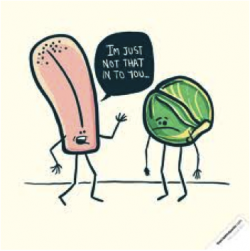The Genetics of Taste citizen science project from the Denver Museum of Nature & Science set out to understand the link between genetics and TAS2R38 gene, responsible for the “bitter” taste receptor.
Come to your senses! SciStarter has curated a list of citizen science projects for all five senses.
Guest post by Michelle Murphy-Niedziela.
Don’t like brussels sprouts? Hate IPA beers? Prefer your cream with a bit of coffee? You might be a supertaster. So, what’s your super power as a supertaster?
 Being a supertaster means that you have an increased taste sensitivity, particularly for bitter foods, due to the presence of the TAS2R38 gene and an increased number of fungiform papillae (or taste buds). Those taste buds have receptors that sense sweet, salty, bitter and sour. TAS2R38 is the gene responsible for a certain type of bitter taste receptor, sensitive to the bitter chemicals PROP and PTC. So more taste buds + more bitter receptors = SUPERTASTER!
Being a supertaster means that you have an increased taste sensitivity, particularly for bitter foods, due to the presence of the TAS2R38 gene and an increased number of fungiform papillae (or taste buds). Those taste buds have receptors that sense sweet, salty, bitter and sour. TAS2R38 is the gene responsible for a certain type of bitter taste receptor, sensitive to the bitter chemicals PROP and PTC. So more taste buds + more bitter receptors = SUPERTASTER!
The citizen science efforts from the community-based Genetics of Taste Lab at the Denver Museum of Nature & Science, led by curator Dr. Nicole Garneau, set out to replicate the academic data and prove that non-scientists can do genetics work. By recruiting members of the community to participate, they collected 3000 samples, analyzed for age, gender and genetics.
After a rocky start while figuring out and learning the techniques, they completed the study in early August 2013 with 1800 genetic samples and 500 tongue photographs. While they weren’t able to replicate all the findings found in academic labs (they did find differences in TAS2R38 expression in males versus females as well as age differences), they were not able to find a connection between the number of taste buds and genetics.
Separate from Garneau’s study, scientists studying taste genetics have found that supertasters may have better control of their appetite and may avoid sweet and fatty foods leading to better health and a less occurrence of metabolic syndrome and obesity (Shafaie et al., 2013; Turner-McGrievy et al., 2013). Further, supertaster patients are less likely to need surgical intervention for chronic rhinosinusitis (Adappa et al., 2013). Women are more likely to be supertasters, 35% of women and 15% of men (Bartoshuk et al., 1994). It turns out, about 25% of people are supertasters; 25% are non-tasters; and the other 50% are somewhere in the middle (medium tasters carry only one copy of the TAS2R38 gene, so fewer of those special bitter receptors and fewer taste buds than supertasters). But have no fear, being a supertaster or nontaster represents normal variation in the human population like eye or hair color.
Garneau and her team will be presenting their work at the Association for Chemoreception Sciences (AChemS) and have even submitted their work for publication in the academic journal Frontiers in Neuroscience.
Want to find out if you are a taster or a non taster? Here are two more fun things you can do at home.
1. Count your taste buds – Dye your tongue using blue food coloring and count the number of bumps on your tongue, compare with your friends!
2. Taste test at home – Order PTC or PROP taste strips online (can be found on Amazon); place them on your tongue; and tell us the results! If you taste nothing, then you are a non-taster. If you taste bitter, then you are a taster!
Image: The Creative Panic
Dr. Michelle Murphy Niedziela is a behavioral neuroscience expert in neuropsychology, psychology and consumer science with a focus on flavor and fragrance technologies. Michelle obtained a PhD and masters in neuroscience and biopsychology from Purdue University and a BS in psychology from Florida State University. In the past she’s worked at Johnson & Johnson, Mars Chocolate and is now a neuromarketing Scientific Director at HCD Research. In her spare time, Michelle enjoys cooking, blogging and traveling. Follow her on Twitter @nerdoscientism and her blog.

